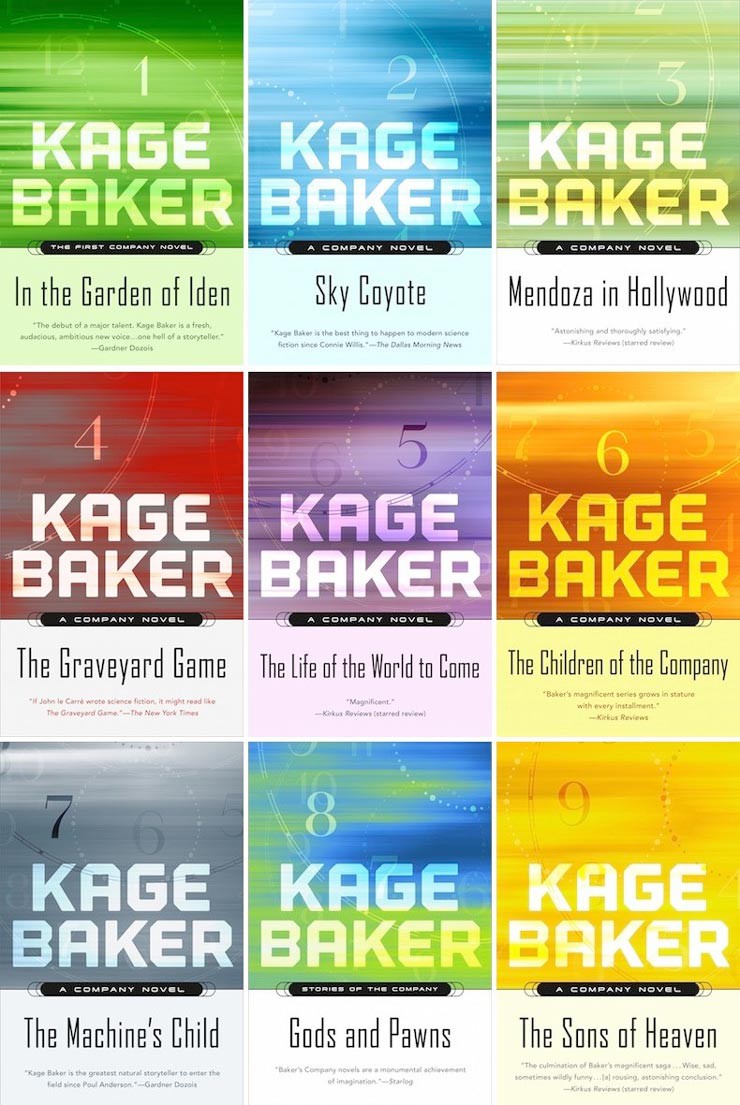Time travel has always been one of my favorite concepts in science fiction. I can trace my fascination back to the chills I felt the first time I read the ending of Ray Bradbury’s “A Sound of Thunder” as a new (and very young) SF fan. The sheer limitless potential of being able to explore the past or the future fascinated me; the idea of involuntarily changing the present by changing the past blew my mind.
From that point on, I had a hard time turning away any story, novel, or movie that featured some form of time travel. I discovered the fascinating concept of time paradoxes. I read classics I enjoyed, and some I didn’t. I read stories that only seemed to use time travel as a way to throw an SF plot into a historical setting, which I always thought was a waste compared to the ones that explored the wide-ranging ramifications of time travel technology and then let those ramifications inform the historical plots.
In that last category, I never found a more thought-provoking and entertaining example than the Company series by Kage Baker, a sprawling series of novels, novellas, and short stories that, over the years, grew into my all-time favorite example of time travel fiction. Which is why I’m so incredibly pleased to introduce the Tor.com reread of the Company series by Kage Baker, hosted by yours truly!
Starting next week, I’ll cover a few chapters of the series every week. As with many of Tor.com’s ongoing rereads, each post will start with a summary of events, followed by commentary and analysis. I will try my very best to keep the summary of events free of major spoilers, but the commentary will contain spoilers for the broader plot and probably references to events and plot arcs from later in the series.
One of my challenges was deciding on a reading order, mainly because the Company series has had, over the years and even to this day, a rather convoluted publication history. This is relevant to the reread and to our reading order, so I’m going to go over this in some detail. If you’re not interested in all this bibliographical detail, scroll down to the list of books below.
What I consider the “core” Company series consists of eight novels. In addition, there are a great amount of short stories, novelettes and novellas, some of which are indispensable to the main plot while others are peripheral in varying degrees. The first four novels (In the Garden of Iden, Sky Coyote, Mendoza in Hollywood and The Graveyard Game) were published between 1997 and 2001. After The Graveyard Game, Kage Baker suddenly found herself without a publisher for the rest of the series, which, as you may imagine (especially if you’ve read the fourth book) drove her growing fan base to some degree of distraction at the time.
Fortunately, all those shorter works Kage Baker had been writing provided a cushion for the fans while they waited for the next novel. A batch of those earlier stories were collected in the 2002 collection Black Projects, White Knights: The Company Dossiers, which some consider “book 4.5” in the series. Other stories weren’t collected or anthologized (yet) and were, at the time, only available in the pages of Asimov’s Magazine (where then-editor Gardner Dozois published over thirty of her stories) or as chapbooks from smaller presses. (Around this time, there was also a wonderful collection of stories entitled Mother Aegypt and Other Stories, whose title story the author described to me at the time as an “undercover Company story”, but which otherwise contains no Company-related stories, so I’m disregarding it here.) Suffice it say, this was a dark and confusing time for Kage Baker fans.
But then, light in the darkness! Tor picked up the dormant Company series, helmed by editor David Hartwell. In 2004, the first Tor title in the series, The Life of the World to Come, appeared. This book (officially the fifth novel in the series) was revelatory at the time, being the launch of the second big arc in the series’ overall plot and containing some major revelations about the first four books that truly set minds spinning. (It also, confusingly, turned the story “Smart Alec” from Black Projects, White Knights into a chapter.)
The next book, 2005’s The Children of the Company, was really a fix-up of some of the stories Kage Baker had written over the past few years. In most cases the original titles of these stories were removed from the text and only mentioned on the copyright page, which was (again) rather confusing for people who’d read them in their original forms over the years.
The final two novels in the series, The Machine’s Child and The Sons of Heaven, appeared in 2006 and 2007, but in between those two Tor released Gods and Pawns, another set of Company short stories, this time presented as a regular collection rather than a fix-up. This insertion of a short story collection right before the final novel in the series was, again, a bit confusing, but in hindsight makes perfect sense as the events of one of those stories is fairly crucial to understanding parts of The Sons of Heaven.
So with that we have the core books of the series. But wait, as the infomercials say… there’s more!
First of all, Kage Baker had published, and would continue to publish, several more stories set in the Company universe. This treasure trove would, after Kage’s death, be bundled in (so far) two more major collections: The Best of Kage Baker and In the Company of Thieves.
Secondly, Kage Baker also published two spin-off novels—The Empress of Mars and Not Less Than Gods, which aren’t part of the main continuity despite being set in the same universe and even featuring some of the same characters. Not confusing enough? How’s this: The Empress of Mars itself is an expansion of one of those early chapbook novellas I mentioned earlier and would eventually also get its own small set of connected short stories, while Not Less Than Gods is, in some ways, a prequel to Mendoza in Hollywood—plus it features a set of characters (the ladies of Nell Gwynne’s) who would go on to have their own set of spin-off stories, making them, yes, spin-offs of spin-offs. Dizzy yet?
Anyway! All this to say that there are a great many possible ways to approach the Company series, but not all of them work quite as well as others. Going by order of publication is doable but obviously hard, especially if you want to take the shorter works into account. Going by internal chronology seems like a good idea for the first few books, but this being a time travel epic, it gets utterly impossible in the second half of the series.
In the end, I decided on starting with the eight core novels in the series, with the one addition of the Gods and Pawns collection inserted right before the last book. So this is what we’ll be covering first:
- In the Garden of Iden
- Sky Coyote
- Mendoza in Hollywood
- The Graveyard Game
- The Life of the World to Come
- The Children of the Company
- The Machine’s Child
- Gods and Pawns
- The Sons of Heaven
And this is as good a time as any to share some more wonderful news: Tor Books has freshened up the look of the series with newly redesigned ebook covers, courtesy of designer Jamie Stafford-Hill!
Once we’re done with these nine books, I’d love to continue on to the two spin-off novels and the roughly thirty stories that are not included in one form or another in the books listed above. These stories are scattered across the collections I mentioned before, unfortunately with more than a little overlap. I actually made a spreadsheet to try and figure out which collection I’d recommend for newcomers to get the most stories with the least overlap, but the long and short of it is that, if you want all of the stories, your best bet is still to just get all three currently available collections (Black Projects, Best of and In the Company of Thieves) in addition to the titles listed above.
(And even then, there are still a few stories that have not been collected. Being a Company series completist isn’t easy, folks. But who knows? Maybe by the time we get to the end of the series, someone will have collected all those stories in one glorious volume, comprehensively and without overlap. We can dream, right?)
In any case, with the nine titles listed above you’ll have the core of the series, and the rest we’ll fill in as we go along. This reading order, by the way, was brought to you by this (silly but very relevant) joke I spotted on Twitter a while back:
What do we want?
TIME TRAVEL!
When do we want it?
THAT’S LARGELY IRRELEVANT!
In addition to being a pretty good illustration of why you can read most of these short stories in any order at any time, it also seems like it could have been ripped straight from the series, so I am hereby unofficially adopting it as the unofficial motto/slogan/fight song for this reread.
So there it is, folks, the Company reread is setting sail! I sincerely hope there’ll be a few people here who are even half as excited about this project as I am, because I love these books and I can’t wait to pick them apart with you… starting next week, in which we’ll cover Chapter One of In the Garden of Iden!
Stefan Raets reads and reviews science fiction and fantasy whenever he isn’t distracted by less important things like eating and sleeping. You can find him on Twitter, and his website is Far Beyond Reality.











